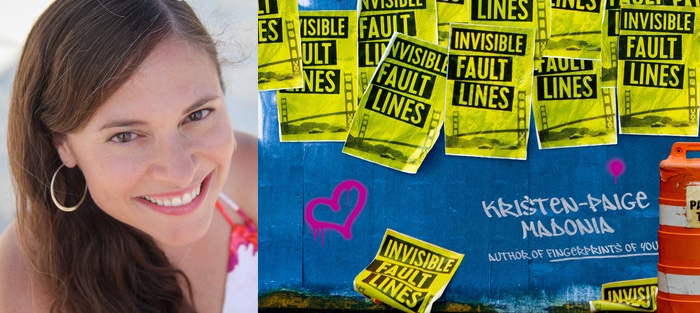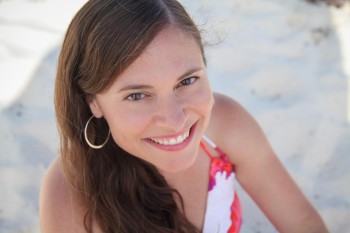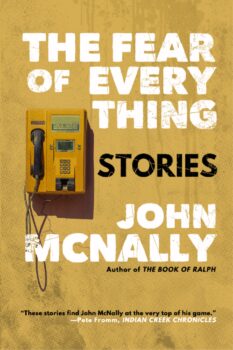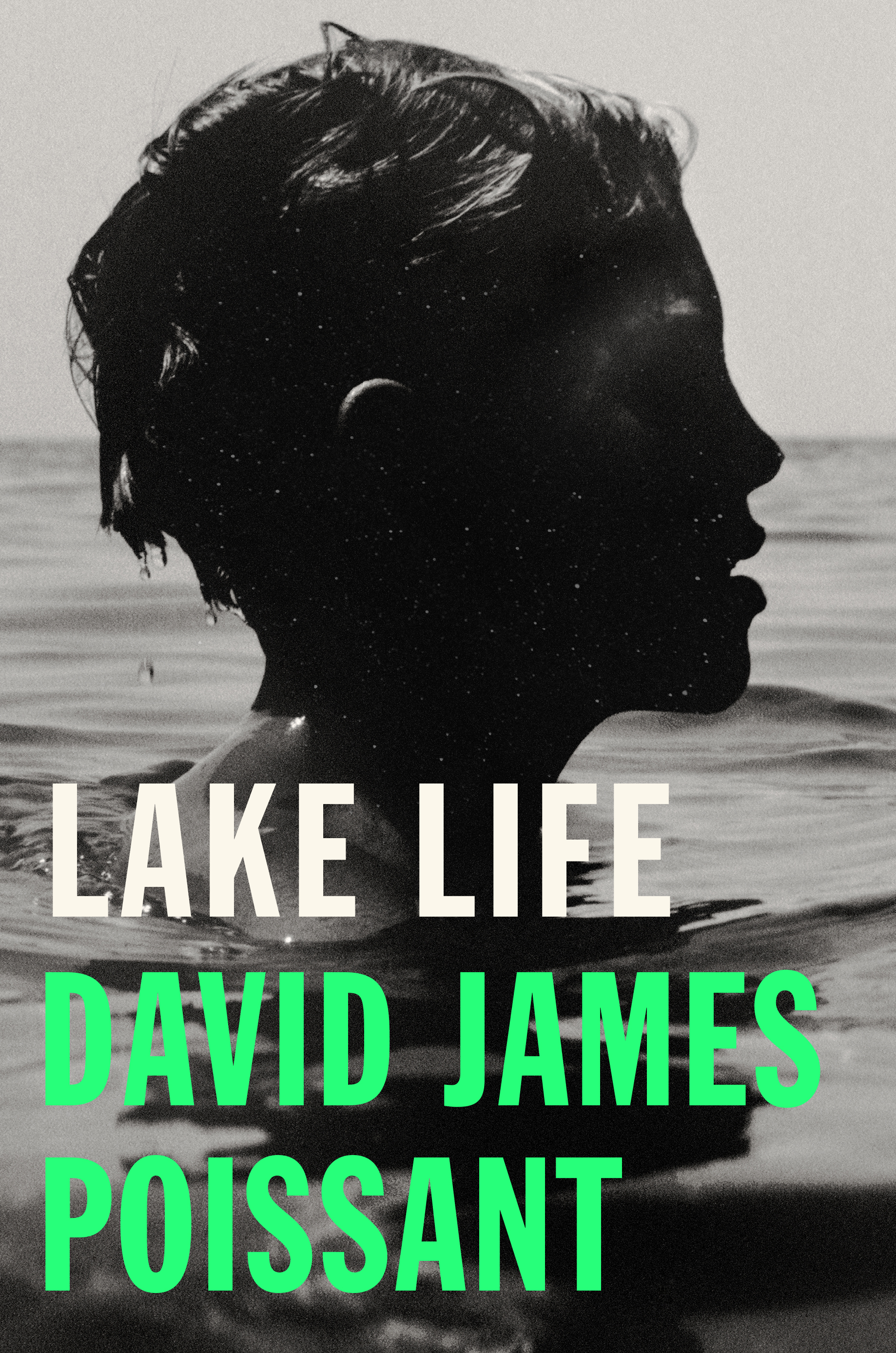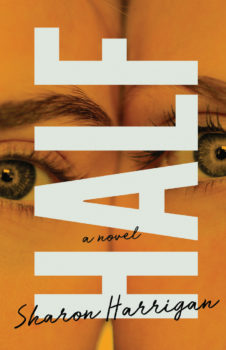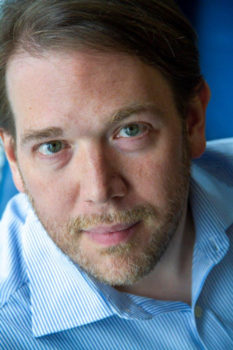I met Kristen-Paige in 2008, when I moved from New York City to Charlottesville, Virginia. She had recently arrived from San Francisco and was teaching at our local literary center, WriterHouse. She was an amazing teacher and, thanks to her, I decided to pursue my own MFA. Now I’m the one teaching at WriterHouse. If she weren’t younger than I am, I’d say I want to be Kristen-Paige when I grow up. We won the same award from the Key West Literary Seminar. We even have the same agent, the legendary Gail Hochman. I interviewed Kristen-Paige when her first book, Fingerprints of You, came out, in The Nervous Breakdown. That book captures the vulnerable voice of youth, the verve, lingo, rhythm and angst perfectly. But it also has elegance, grit, and sexuality of a literary novel. In some ways, Invisible Fault Lines (Simon & Schuster) is even more impressive, in the ambitious and nuanced way it straddles realism and fantasy. On the opening page, Callie’s father has disappeared. She spends the summer searching for him, wondering if he might have slipped through an invisible fault line of time.
For this interview, Kristen-Paige brought a bottle of Chardonnay to my house, and we sat in the sun talking about how she went from “accidental” YA author to poster child and cheerleader for the genre and the formal and thematic elements that distinguish adult literary books from those for young adults.
Interview:
Sharon Harrigan: You’re the author of two YA novels. How’d that happen?
Kristen-Paige Madonia: My first novel got me an agent, and she took me on as an adult literary client. While she was sending out that novel (which ultimately didn’t sell), I started Fingerprints of You, and the first few chapters were published as short stories. Then I had a residency at the Key West Studios, and I wrote the first draft of the whole novel really quickly, in five weeks.
Did you know it would be published as YA?
Not at all. Though people tell me I can only say I accidentally wrote a YA novel once.
Fingerprints of You was your “accident”?
I think a lot of books are “accidents.” Did you ever think of yourself as a nonfiction writer? And yet your first book will probably be a memoir.
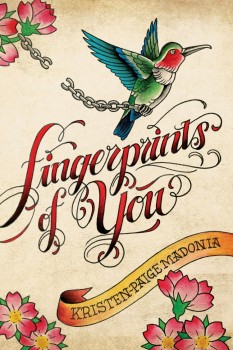 Having accidents means you’re taking risks, which is where all good things come from.
Having accidents means you’re taking risks, which is where all good things come from.
I wasn’t thinking of readers really, so when I gave Fingerprints of You to my agent we never even talked about YA. The industry compartmentalizes authors, and I wasn’t considered YA, but I was also willing to be flexible about labels. We went through a number of drafts. Gail is an editor as well as an agent, which I love. So we worked on it for a while.
Isn’t that attitude changing?
It is. This was back in 2010, and a lot has changed since then. I didn’t really care what we called my book, so we went out with it, to YA and adult editors, and we got some strong interest from one editor on the adult side, from one of the big publishers who, in the end, said the book would get more attention as YA. Because it was written with a lot of adult themes, with a literary slant and an edgy kind of grittiness built into it, I think of it as my accidental YA novel.
And you had a great experience.
I did. I didn’t know that much about YA when I started, but I had two years between contract and publication, so I had a lot of time to learn about the industry and read the writers. I got on Twitter and at first just listened. It was a really lovely, friendly community. They were all talking about each other’s books, and it was very welcoming. YA was still in a big boom of growing, and I was thrust on so many panels and asked, How adult is too adult for young adult? Because Fingerprints of You has a lot of adult elements.
From the very beginning, that sexy scene in the tattoo parlor.
One of the major themes is sex is power.
So it worked out really well?
Yes. Then I wrote another novel for adults after Fingerprints of You came out, and it was this big, sprawling, multiple point of view, messy, huge thing. I’ve stopped calling it a novel. It’s “my project.” I fell in love with the characters, and pieces of that were published as short stories. I thought that would be my next book. But I realized quickly that it was going to be one of those books that takes a really long time. Maybe fifteen years. While Gail was still reading my draft of that book, I was also doing a lot of traveling and speaking and meeting with a lot of young adult writers and readers and that’s how Invisible Fault Lines started. It also felt fairly quick in terms of knowing what I wanted to do with it. By the time she got me the notes back on “my project,” I said, I know it’s going to be a lot of work to fix that book, and I’m working on something else already. She said, Keep doing that. So I jumped back into Invisible Fault Lines.
In the acknowledgments you thank the people at Wordstock for giving you the seed for the book. What’s the story behind that?
There are a number of different seeds for this book. Fingerprints of You came out the same time as David Levithan’s novel Every Day. I was out at Wordstock in Portland, and he was doing a reading, and he said, I’ve never done this before but I’m going to read from this new one that’s coming out. And he read from Two Boys Kissing and talked about the origins of that book.
The epigraph for Invisible Fault Lines is from that book, and it’s perfect. “How beautiful the ordinary becomes once it disappears.”
When I heard that line, that’s when my book came to me. He read from that book, and I took notes on the reading and scribbled out the plot to my book.
If that quote could grow up to be a book, it would be Invisible Fault Lines.
That’s exactly how it happened. It becomes very evident when you’re traveling inside the YA world that teen readers are a lot more excited about the idea of unanswerable, what-if questions than they are by realism. I was the only lonely realistic fiction author at the signing table, and everyone else had long lines. And to be honest, I started feeling sorry for myself about it. I was thinking, What’s going on there that’s so interesting and so exciting? And could I do it and still do it my way? I didn’t know what “my way” meant. But I thought, Surely, I would never write a time travel novel. That wasn’t something I’d ever imagined doing.
But then you did.
The night of David’s reading I kept thinking about his quote and how I tend to begin novels with an event after which nothing will ever be the same for my characters. Braiding the idea of how we define ordinary with my new interest in exploring unanswerable questions in terms of time, space and reality served as the inspiration I needed. I began writing Invisible Fault Lines that very night and started with the opening line: “My father disappeared on a Tuesday that should have been like any other Tuesday but which eventually became the Tuesday my father disappeared.”
The quote that’s on your bookmark. It was on the coffee table and my daughter saw it and said, “What a great line!”
That line came from asking, What is ordinary? And what is possible that we might not have proof of? After that, the concept of using time traveling as an opportunity to manage grief fell into place.
I was wondering, as I was reading, How is she going to manage this tightrope walk? And you really kept me guessing until the last page. I don’t want to give away the ending, but I found it authentic and believable in a realistic way but also open to fantastical possibilities in a way that is really thought provoking.
That’s so nice to hear. A lot of readers won’t like the ending. But, as I tell my students, when you make art, people are going to have strong opinions about it. Different opinions.
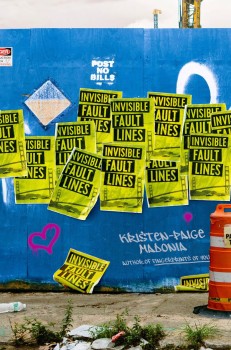 You’re doing something ambitious, balancing realism with something not realistic. I’m doing that in the novel I’m working on, too, the one that I just sent to Gail. It’s told in the “we” voice of two twins. You have to suspend your disbelief and imagine that they’re so close that they do everything together, that they speak and even think in one voice.
You’re doing something ambitious, balancing realism with something not realistic. I’m doing that in the novel I’m working on, too, the one that I just sent to Gail. It’s told in the “we” voice of two twins. You have to suspend your disbelief and imagine that they’re so close that they do everything together, that they speak and even think in one voice.
Yet you want the story to be believable, on a deep level, even when you’re going someplace unexpected.
And it’s tricky.
When you start a book with a concept, there are limitations. Invisible Fault Lines was very much a concept book. I knew I wanted to do this blending. And once you decide that, like what you’ve done with your point of view choice, it’s really exciting and wonderful, but also some days you wonder, Why did I decide to do this? It’s so hard. I really wanted to do something different with this book. Fingerprints of You is straightforward. There was nothing extremely complex about the timeline or the narrative arc or the way we learn the things we learn about the protagonist’s life, the motivations of her character. I’m very proud of that novel, but I wanted to do something different, something more challenging.
You knew exactly what you wanted to do with this time around. No accident about it.
Going back to your original question, this book was originally intended to be YA. While the first one was not. I think, though, that there still are elements for cross-over appeal.
That’s one of the things that seems to be changing, too: The number of adults who unabashedly say they read YA. I’m sure Invisible Fault Lines will have a lot of adult readers. It deserves to.
That’s been really exciting. For a while there was a stigma. And there may still be, a little bit, but not nearly as much as there used to be, for YA writers and readers.
There are MFA programs now that offer YA as an option.
I teach at the University of Nebraska Omaha, a low residency program. I’m mentoring two students right now. One is writing YA and one is not. I can do both. The program was getting a lot of applicants asking for YA, so they wanted to bring someone in to teach it.
Is YA is part of the literary establishment now?
More and more. I teach at James Madison University, too, and mine was the first YA class in the English department and it’s been filled every time. It’s wonderful to see that YA authors are starting to be acknowledged as an important part of the literary canon.
And this is new, right? This is the golden age of YA.
It feels like it to me.
You’re in big demand as a teacher.
I’ll be doing a workshop for the Writing Barn in Austin. And there’s another center in Martha’s Vineyard. I’ve taught at Taos and Key West, as well as in Virginia. There’s a demand for workshops teaching how to write YA, the students are asking for it, and a lot of programs are recognizing that.
I’m sure people ask you this question a lot. What’s the difference between YA and adult literary fiction?
I have mixed feelings because as a teacher of YA, part of my job is to recognize differences and teach that to my students. As a writer, though, I try not to think about the differences, and the level of writing I would bring to a literary novel for adults, I hope to bring to YA, too.
I’m not suggesting YA is watered down. But, for instance, should a YA book have a shorter time span? Should it have less back story? Are there certain formal elements that are different?
I’m a big proponent of no rules. But I think in general there are certain things you’re going to always find. A teen protagonist, a really strong voice, and a voice that’s immediate, so even if the writing is in past tense, it’s not a thirty-five-year-old looking back on being seventeen, it’s a seventeen and a half year old thinking about being seventeen. We talk a lot about immediacy in YA in my workshops. And urgency. I always teach Ben Percy’s essay on urgency that he published in Poets & Writers. (I can’t wait to get my hands on his new craft book, Thrill Me, because I teach so many of his craft essays already.) But in YA, there’s also time for pauses and reflection, so I always hesitate to talk too much about immediacy. Some people think YA has to be all action, but the heart of YA is coming of age stories and a lot of it is internal, so the writing all about that balance.
Does it have to be set in the present?
Usually it’s contemporary. Also, for me, there has to be an element of hope in YA. It’s our job to realistically portray the world, to be authentic about some of the darker sides of adulthood, as we’re introducing teen readers to these issues. I tend to write without tying things up neatly. But I do think that my books always have an element of hope, too. For teenagers, life sometimes seems horrible. They can feel isolated and alienated, but I like to offer hope that they’ll be able to get to the other side. Even though I might not answer all the questions about exactly how things are going to play out as these characters enter the adult world, I think my books are always rooted in survival.
That’s what Invisible Fault Lines is about—survival. The worst thing that could happen is for someone to have a parent go missing.
And Callie survives it.
You’re not a teenager, but you created a completely immersive and believable teenage universe, and I felt like I knew Callie and Beck so well they were like my best friends. It must have involved a lot of research.
There are four years between these books. I’ve been working on this book a long time! I turned in the draft of this novel to Gail the day before I was induced with my son.
That’s a great story.
So I had this pressure of wanting to finish it because I knew everything was about to change. But that was the first draft and then I had to work a lot on it afterwards. It’s nice to hear you say that because I think I was writing from a place of fear with this novel, in terms of the characters. This is the first time I didn’t start a book with the characters.
You started with a concept.
I started thinking I’m going to do a book about something different and strange and experimental about this parallel universe idea. Then I thought, But I’ve got to get the characters right, because I’d always concerned myself with character first. I worked very hard to make sure it wasn’t just a story driven novel.
And it’s not. One of the main characters is the father, who goes missing on the first page. It was interesting to see how you developed him as a character–because you really did–in an organic way as Callie forces herself to remember him—through his smells and clothes and habits, the way he slurped his soup and picked his teeth at restaurants. In general, I was won over by the way you develop character through idiosyncratic gestures. I’m always telling my students: “Don’t say someone smiled or sighed or shrugged. Give me a surprising gesture, something that reveals the character’s personality.” Your book is full of so many examples, I could hand it to my students and say, “Do this.” One of my favorites is this one, when Callie is on her first date with Isaac:
Every so often, he’d do this funny thing and crack his jaw when he ran out of things to say. He’d open his mouth so wide I probably could have seen his tonsils if I was sitting in front of instead of next to him, wide enough for me to think of cartoon characters like the Muppets or the Roadrunner if his beak came unhinged. I’d hear the pop, a small air-filled explosion inside his mouth, and then he’d close his lips. I liked how I could smell the cinnamon toothpaste on his breath when he did it.
That was added in revision. That was an extra layer I had to add in.
You said you read a lot of YA after you became an “accidental” YA author. What do you recommend?
One of the greatest elements of the YA genre is the diversity–there are countless sub-genres and it’s often a place where you’ll see authors experimenting with form, so I always recommend reading widely regardless of your typical literary interests. For example, each semester when I teach YA Lit at James Madison University, I include one John Green novel on the syllabus as our contemporary read, but I also include M.T. Anderson’s Feed, which fuels my lecture on futuristic settings. I recently read Violent Ends: a Novel in Seventeen Points of View, which I assigned to a student I’m mentoring in the MFA program at the University of Nebraska Omaha. It tells the story of a group of students affected by a school shooting and was written by seventeen different YA authors–it’s gritty and honest and brilliant in terms of form and structure. Laurie Halse Anderson is also a favorite as is David Levithan and A.S. King.
What’s next for you?
I’m working on a new novel based around my curiosity about our increasing reliance on technology and on the way that reliance impacts art, the environment and family dynamics. It feels completely different than my other two books.
Another challenge? Something new?
Of course.

